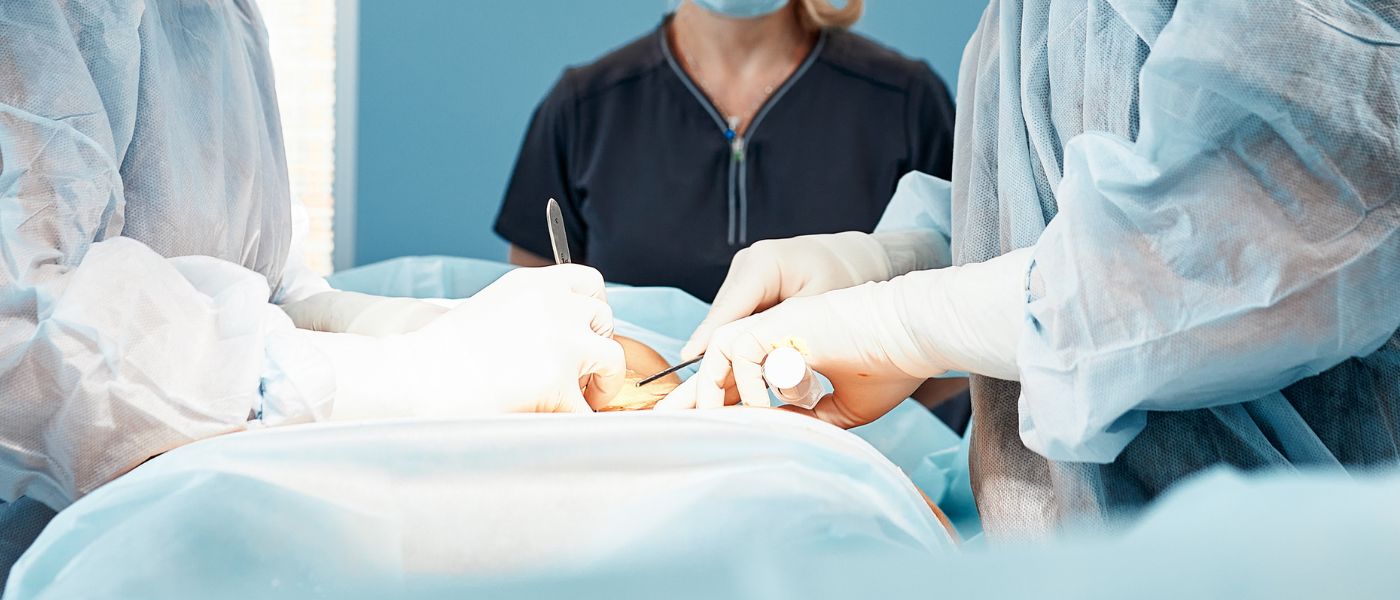Inguinal / Groin Hernia
Inguinal hernias are a protrusion of abdominal tissue – often fat/adipose tissue or a loop of intestine – through the inguinal canal (the pathway through which the testicles of a male drop from the abdomen into the scrotum). These hernias occur in up to 25% of men and far less commonly (3%) in women. About 800,000 of these surgeries are performed each year, making up 75% of all hernia surgeries.
Some inguinal hernias are also painful. This can either be sharp and occasional pain or dull and constant. Some patients experience a feeling of heaviness in the groin or even a burning sensation. They are a progressive condition and do not resolve on their own. As such, symptoms usually do not disappear but tend to get worse.
Interestingly, the severity of symptoms of a hernia does not necessarily represent the size of the hernia. Larger hernias are often less painful, while smaller hernias can be more painful.
Important: Some patients will experience a bulge that does not retract into the abdomen. This is known as incarceration and is an urgent concern that needs to be seen by a qualified physician as soon as possible. More emergent is what’s known as strangulation. This is when an incarcerated piece of the intestine has lost blood flow. This is punctuated by extreme pain and/or redness in the area. This needs to be addressed at an emergency room with immediate surgery before the contents of the hernia die from blood starvation.
While strangulation is a relatively uncommon occurrence (1%), you should also be aware that emergency care for a hernia is less likely to be successful and may lead to chronic inguinal area pain in the future. Learn about when you can (or shouldn’t) wait to repair your hernia.
How Does the Procedure Work?
Hernia repair is most often performed laparoscopically using the TAPP (transabdominal preperitoneal) or TEP (totally extraperitoneal) methods. The difference is whether the surgeon enters the peritoneum (TAPP) or not (TEP). In both cases, small incisions are made in the abdomen, at which point we dissect the hernia, allowing us to put the contents back into the abdomen. The musculature and facia, however, are not sewn together in what is known as a tension repair. Abdominal tissue can weaken over time, and performing a tension repair may lead to recurrence in as many as 20 to 30% of patients.
Instead, new technology allows us to cover the defect with lightweight self-adhering mesh. This mesh stimulates good inflammation, which produces scar tissue that uses the mesh as a lattice to grow over the repair. This mesh repair ends up stronger than the original tissue. You may have heard of the controversy surrounding mesh. However, modern mesh technology is safe and effective. Any legal issues you’ve seen recently are usually associated with female pelvic mesh, not hernia mesh.
Once the mesh has been placed and after a few hours of recovery, patients are sent home to recover. Patients should not lift anything over a gallon of mild (5 or so pounds) or exert themselves for several weeks after the repair to ensure the mesh does not migrate or curl and the hernia does not reoccur. Once cleared by your hernia surgeon, you will have no limitations.
Prognosis for Surgical Repair of Inguinal Hernias
Most patients do very well after their inguinal hernia repair as we use modern mesh technology and the most advanced surgical techniques. We address the possibility of long-term chronic pain by carefully accessing the hernia using blunt surgical tools. Self-adhering mesh has also reduced the likelihood of chronic pain associated with the titanium or absorbable tacks once used to affix the mesh to the abdominal wall.
Patients who follow their postoperative guidelines closely and do not stress the repair in the early weeks after surgery are likely to have a full recovery and regain their usual activity levels quickly. It is worth noting that patients who schedule their hernia repair tend to have a better prognosis and a lower risk of chronic pain than those who wait and ultimately have an emergency.
Finally, those who seek to repair their hernia earlier are less likely to have longer-term complications as hernias tend to grow in size and become more complex to repair as they do.
Next Steps
A hernia is easily diagnosed at an office. At this point, you can discuss whether a hernia repair is necessary with one of our surgeons. Contact us to schedule a consultation.




